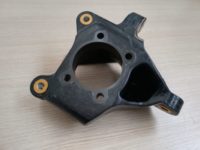A European consortium called ACOMPLICE (Affordable Composites for Lightweight Car Structures) recently embarked on a two-year program to develop low-cost materials for mainstream automotive applications. ASSEMBLY asked Elaine Arnold, collaborative research and technology project manager at Cytec Industrial Materials—which is leading the consortium along with several partners— to discuss the group’s goals and the assembly challenges of using composites for automotive applications.
ASSEMBLY: What is ACOMPLICE? What are your long-term goals?
Arnold: ACOMPLICE is a collaborative project, supported by the UK’s Technology Strategy Board. It is led by Cytec Industrial Materials and involves Aston Martin, Delta Motorsport, ABB Robotics and Pentangle Engineering Solutions.
ASSEMBLY: What are the long-term goals of ACOMPLICE?
Arnold: The objectives are to develop the materials and supporting technologies to prove the affordability of high-performance composites for the mainstream automotive industry. The automation of lamination via pick-and-place and assisted-diaphragm forming is the key to achieving these objectives. In parallel, materials are being developed [that will be] suitable for facilitating their manipulation with robotics. Design for manufacture is another key to demonstrating the cost effectiveness of composites. Target components are being redesigned, maximizing on the specific properties of composites, rather than providing a simple replacement for metals. The project will demonstrate the advances made via the manufacture of a fully representative structural component.
ASSEMBLY: There appears to be more interest in using carbon-fiber composites for automotive body panel applications today. Do you expect to see applications for structural components in the future? What issues still need to be addressed?
Arnold: As major directives emerge, requiring reduced CO2 emissions, the automotive industry is gradually being forced into reducing vehicle mass. It is therefore likely that composites [will] become more widely used as structural elements within the vehicle, due to their higher strength-to-weight properties. However, there remain a number of issues to overcome before composites are adopted for mainstream applications, including the cost of high-performance composites, their design for use, and recycling aspects.
ASSEMBLY: How does carbon-fiber technology simplify the assembly process?
Arnold: Composites can simplify assembly processes in some cases, [such as] cocuring semifinished components.
ASSEMBLY: What are some of the challenges of joining carbon-fiber composites?
Arnold: It is not possible to weld with thermoset composites. Joining is therefore a challenge when compared with metallic materials. However, mechanical and adhesive bonds are generally sufficient for most requirements.
ASSEMBLY: How difficult is it to join carbon-fiber composites to other materials widely used in the auto industry, such as aluminum or steel?
Arnold: As with all materials, joining composites to dissimilar materials can be challenging, particularly when the assembled part is exposed to temperature changes, as fluctuations cause differing expansion and contraction rates. However, if this is accounted for, there is rarely a problem.
ASSEMBLY: What are the benefits of using adhesive bonding to join composites?
Arnold: It is arguably easier to bond composites to themselves than it is metals to themselves, as a composite surface may be more easily prepared for bonding. [It] may also use a similar adhesive to the polymer used within its matrix. Depending on the chemistries of the composite and the adhesive, it is sometimes possible to partially dissolve the upper composite surface, resulting in a solid adhesive bond.
ASSEMBLY: What are the benefits of using mechanical fasteners to join composites?
Arnold: Mechanical fastening is often the only sure solution to joining composites. Bonding is not often done for structural applications, as there is a higher risk of adhesive failure.
ASSEMBLY: What challenges still need to be addressed before there is more widespread use of carbon-fiber composites in the auto industry?
Arnold: Cost is the primary issue preventing the widespread use of high-performance composites in the automotive industry. Cost can be reduced via reducing manufacturing times and increasing throughput, though these technologies are still in early stages of development. The automotive industry is also accustomed to using metals for manufacture and often seeks to replace existing components with composites. The mechanical characteristics of composites are different to metallic materials and therefore a different design approach is required to maximize the lightweighting potential that composites offer. This is a significant hurdle. Simple replacement of materials can often be counter-productive from a weight saving perspective.



